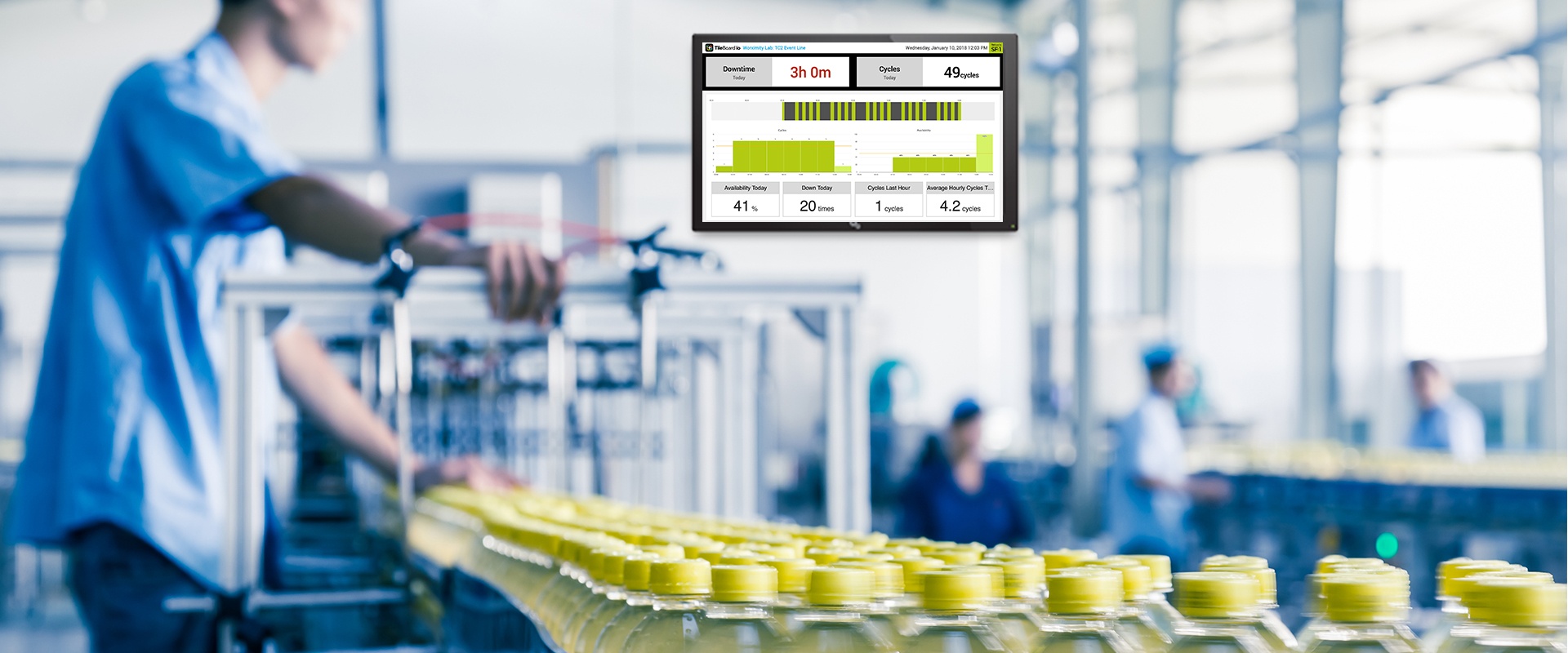To maintain a competitive edge, companies today are turning to real-time, sensor-based machine monitoring to reduce costs and improve margins. These companies are learning that these systems are reasonably priced and that they quickly pay for themselves. Machine monitoring uses high-tech sensors mounted on equipment that collect real-time data and send it wirelessly to analytical software. Data results allow employees to watch equipment performance moment by moment. Then, personnel can make critical machine adjustments before production defects or other problems accumulate.
A machine or production line monitoring system can be a significant step forward for companies looking to implement smart factory operations or Industry 4.0. Continuous recording and reporting of equipment performance provide real-time data so workers can identify problems as they occur. Also, the data produced is available to every member of the management and production team. Using real-time performance data means equipment adjustments can be made immediately, which prevents protracted problems.
Savings with this software can be dramatic as compared to manual data collection, but successful implementation of a machine monitoring program requires careful planning and execution. Let’s look at some of the ways to successfully implement a new machine monitoring software.
A Successful System Implementation Needs Careful Planning and Execution
Careful planning and execution are required to realize the maximum benefits from any system implementation. Equipment monitoring is an early part of an overall plan for implementing lean manufacturing. The first step, then, is developing a plan that includes measurable goals and that ensures those goals align with lean principles and strategy. Lowering costs and improving productivity are generally high on a list of measures for tracking machine operations.
1. Survey your factory for the best opportunity
The initial installation should show benefits quickly. Implementing monitoring on a pilot line offers the best opportunity to demonstrate the effectiveness of the system. Creating an “island of success” not only improves plant performance but also allows employees to quickly see tangible benefits.
Select a pilot line based on whether the line is either a bottleneck or an operation that has caused consistent throughput or performance difficulties. As gains are made on this line, the benefits will likely be larger and more evident than on more efficient operations. Quickly capturing this “low-hanging fruit” demonstrates the benefits achievable for the total operation.
Suppliers of machine monitoring and analysis systems can often provide consulting services to assist a company with planning and implementing a monitoring system. Worximity, a supplier of real-time smart factory analytics, has provided monitoring systems and implementation support to dozens of companies throughout the US and Canada. Connect with Worximity to discuss how our experience can help improve your plant performance.
2. Identify key metrics
Selecting suitable metrics is essential both for demonstrating the benefits of the monitoring program and for providing an ongoing method for line personnel to make line adjustments. Metrics should be both meaningful for long-term tracking and useful for making immediate line changes. Information about things such as line speeds, slow-downs, maintenance repairs, out-of-spec performance, production volume fluctuations, and quality issues is important to line supervisors. Employees can make immediate line adjustments in response to unfavorable metrics.
It’s also crucial that metrics across the plant be complementary. This means that measures should be avoided that may look good for one area at the expense of lower performance in another. For example, efficiently producing the incorrect part not only slows down the next process step but also causes a costly increase in work in process inventory.
3. Provide comprehensive employee training
When machine monitoring is first implemented, supervisors and employees will have access to real-time performance data. In many plants, information previously available was likely presented in the form of daily or weekly performance reports, and supervisors used this old data to make line changes.
With continuous machine monitoring, equipment operating data is continuously updated. This new approach means that supervisors and employees must learn new ways to use this information. Employees and supervisors should be trained in how to view, interpret, and act on the new metrics being presented.
This training is critical to capturing the benefits of monitoring. For example, instead of waiting a day to adjust equipment speeds, these adjustments can be made immediately upon recognizing metric deviations. Waiting to make line adjustments means losing opportunities.
4. Validate system and data output
Once a monitoring system is in place, an important step is to validate output data accuracy. Validation should begin as soon as monitoring is underway. A manual verification process can be established to ensure the system is functioning correctly. Once confidence in the system is established, the validation can end and ongoing operations can continue.
5. Track benefits and adjust system as needed
The benefits of machine monitoring begin immediately. Well-trained line employees and supervisors start making real-time adjustments to equipment as soon as data begins to flow from the monitoring software. Results should be posted for all employees to help boost morale and instill confidence in the monitoring process.
Areas of focus include:
- Quality parts
- Employee productivity
- Equipment performance
- Scrap and waste
- Operating costs
Plan Rollout to Other Plant Areas
Once the initial implemented system has been validated and is producing correct results, it is time to identify how the system should be rolled out to other plant areas. Using the same criteria as for the initial pilot, select the next area for implementation. By following the steps discussed above, your organization can realize greater and greater benefits as additional areas are brought on-line. The payback can be substantial, but careful project planning and execution are required.











